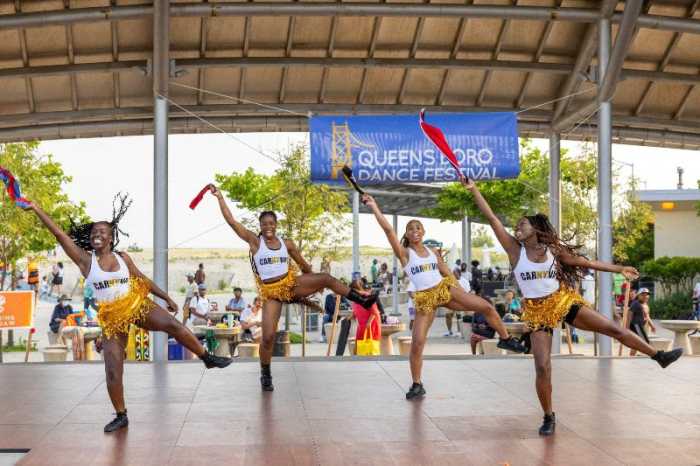City Seeks Greater Affordability
Hoping to make New York City a more affordable place to live, Mayor Bill de Blasio rolled out on Monday, May 5, a 10- year, multi-billion plan to create hundreds of thousands of new housing units across the five boroughs.
De Blasio announced the release of “Housing New York,” a proposal which combines an array of measures aimed at building and preserving 200,000 affordable homes to lowand middle-income New Yorkers while addressing a dire need for residential space and stemming everincreasing rental market rates.
“This plan, over the next 10 years, will create opportunity for so many people who are currently being priced out of this city,” de Blasio said during Monday’s announcement in Brooklyn. “It will create affordability in the midst of what has been the greatest affordability crisis the city has ever experienced. It will be a central pillar in the battle against inequality.”
Created in collaboration with 13 city agencies and input from 200 “stakeholders,” the Housing New York plan aims to curtail skyrocketing rent rates and address a shortfall in available housing.
Over the last two decades, according to the report, average monthly rents have risen by 40 percent while average salaries for renters grew by less than 15 percent. At the same time, demand for housing-and its costs-grew with the city’s population, now well over 8 million.
The proposal includes mandating that a percentage of housing units in new residential developments be provided to individuals with very low to middle incomes. Very low income, as defined by the city, is below 50 percent of the annual median income (AMI), while middle income represents between 121 and 165 percent AMI.
Homebuilders, in return, would be offered various financial incentives and reduced regulatory bureaucracy.
The initiative also includes reviewing the city’s land use policies and the building, housing and zoning codes and making any changes needed to make homes more affordable.
Additionally, the city will provide and seek funds to maintain ongoing affordable housing subsidies (such as the Mitchell-Lama program) and capital funds to develop residential space on public properties, where appropriate.
The city will also identify communities in each borough- including Brooklyn’s East New York and the Hunters Point section of Long Island City-where affordable housing could be developed and/or expanded.
Another part of the plan is the creation of the Neighborhood Construction and Infill Homeownership Opportunities programs to develop one- to fourfamily buildings and apartment buildings of up to 20 units. This would be done in conjunction with small-scale developers, nonprofit organizations and community development corporations.
The Housing New York plan received praise from national figures including U.S. Secretary of Housing and Urban Development Shaun Donovan and Archbishop of New York Timothy Cardinal Dolan; statewide figures including Attorney General Eric Schneiderman and Sen. Charles Schumer; and various local elected officials, including Representatives Joseph Crowley, Grace Meng and Nydia Velázquez and City Council members.
“The mayor’s new housing plan is a bold, historic step in addressing our city’s affordability crisis,” said City Council Member Elizabeth Crowley. “New York City is facing the highest level of homelessness since the Great Depression, but we don’t need more shelters-we need more permanent housing that is truly affordable and attainable.”
“One initiative, in particular, that I look forward to work within the mayor in my capacity as chair of the Council’s Committee on State and Federal Legislation is to reform state law with respect to vacancy and luxury decontrol of rent regulated apartments,” added City Council Member Karen Koslowitz.
“The guiding principles of the mayor’s 10-year plan not only address the housing needs for the constituents in my district, but for all New Yorkers,” said City Council Member Julissa Ferreras.
“Representing numerous community based organizations in north Brooklyn, I am looking forward to the integration of community input in helping to identify new development and preservation sites that can assist the 10,000 families that have been displaced at the hands of luxury developers,” said City Council Member Antonio Reynoso.
“It is clear in its goals, precise in the AMI’s targeted and honest about what needs to be done to achieve affordability for more New Yorkers,” said City Council Majority Leader Jimmy Van Bramer. “I am particularly pleased with the community engagement called for including respectful consultation with NYCHA residents on future plans.”
One lawmaker, however, warned that the city should avoid any attempt to legalize illegal basement apartments.
“How many situations have we come across where these units caught on fire and resulted in fatalities because of illegal occupancy? Legalizing these units also creates substandard housing and certainly does not solve the affordable housing issue in the City of New York,” said State Sen. Tony Avella. “We very much want to create affordable housing and increase the opportunities for people to have a safe apartment in this city. But to turn the city zoning and building code on its head to allow the legalization of basement apartments is just simply unacceptable.”


































